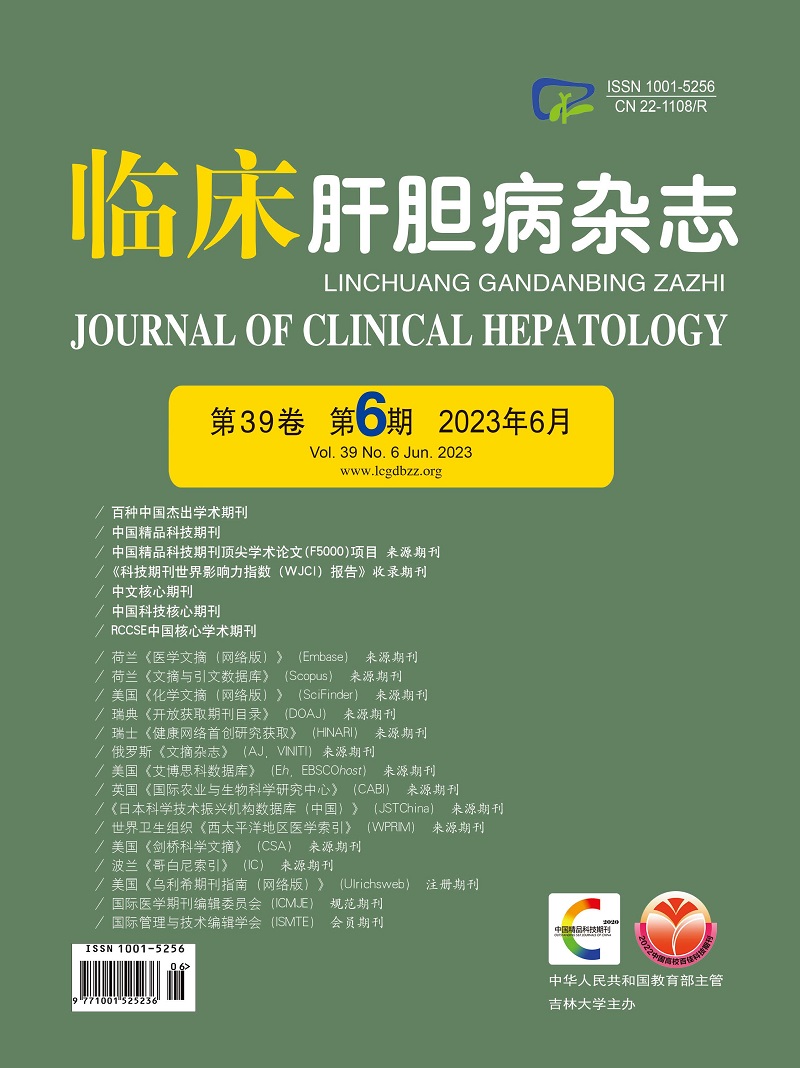| [1] |
ARROYO V, MOREAU R, JALAN R. Acute-on-chronic liver failure[J]. N Engl J Med, 2020, 382(22): 2137-2145. DOI: 10.1056/NEJMra1914900. |
| [2] |
|
| [3] |
ARYAL B, YAMAKUCHI M, SHIMIZU T, et al. Therapeutic implication of platelets in liver regeneration -hopes and hues[J]. Expert Rev Gastroenterol Hepatol, 2018, 12(12): 1219-1228. DOI: 10.1080/17474124.2018.1533813. |
| [4] |
TAKAHASHI K, LIANG C, ODA T, et al. Platelet and liver regeneration after liver surgery[J]. Surg Today, 2020, 50(9): 974-983. DOI: 10.1007/s00595-019-01890-x. |
| [5] |
Liver Failure and Artificial Liver Group, Chinese Society of Infectious Diseases, Chinese Medical Association; Severe Liver Disease and Artificial Liver Group, Chinese Society of Hepatology, Chinese Medical Association. Guideline for diagnosis and treatment of liver failure(2018)[J]. J Clin Hepatol, 2019, 35(1): 38-44. DOI: 10.3969/j.issn.1001-5256.2019.01.007. |
| [6] |
JIE Y, GONG J, XIAO C, et al. Low platelet to white blood cell ratio indicates poor prognosis for acute-on-chronic liver failure[J]. Biomed Res Int, 2018, 2018: 7394904. DOI: 10.1155/2018/7394904. |
| [7] |
XU X, HOU Z, XU Y, et al. The dynamic of platelet count as a novel and valuable predictor for 90-day survival of hepatitis B virus-related acute-on-chronic liver failure patients[J]. Clin Res Hepatol Gastroenterol, 2021, 45(2): 101482. DOI: 10.1016/j.clinre.2020.06.008. |
| [8] |
GUO J, GONG ZJ, SHI CX. Research progress on hepatitis B virus related acute-on-chronic liver failure with infections[J/CD]. Chin J Liver Dis(Electronic Edition), 2022, 14(3): 5-8. DOI: 10.3969/j.issn.1674-7380.2022.03.002.
郭金, 龚作炯, 石春霞. 乙型肝炎病毒相关慢加急性肝衰竭合并感染研究进展[J/CD]. 中国肝脏病杂志(电子版), 2022, 14(3): 5-8. DOI: 10.3969/j.issn.1674-7380.2022.03.002.
|
| [9] |
DUSEJA A, SINGH SP. Toward a better definition of acute-on-chronic liver failure[J]. J Clin Exp Hepatol, 2017, 7(3): 262-265. DOI: 10.1016/j.jceh.2017.05.002. |
| [10] |
GAO XY, CHEN L, GAN JH. Value of Model for End-Stage Liver Disease score combined with platelet-to-white blood cell ratio in predicting the prognosis of patients with hepatitis B virus-associated acute-on-chronic liver failure[J]. J Clin Hepatol, 2021, 37(5): 1070-1074. DOI: 10.3969/j.issn.1001-5256.2021.05.019. |
| [11] |
SARIN SK, CHOUDHURY A, SHARMA MK, et al. Acute-on-chronic liver failure: consensus recommendations of the Asian Pacific association for the study of the liver (APASL): an update[J]. Hepatol Int, 2019, 13(4): 353-390. DOI: 10.1007/s12072-019-09946-3. |
| [12] |
SHI Y, YANG Y, HU Y, et al. Acute-on-chronic liver failure precipitated by hepatic injury is distinct from that precipitated by extrahepatic insults[J]. Hepatology, 2015, 62(1): 232-242. DOI: 10.1002/hep.27795. |








 DownLoad:
DownLoad:
